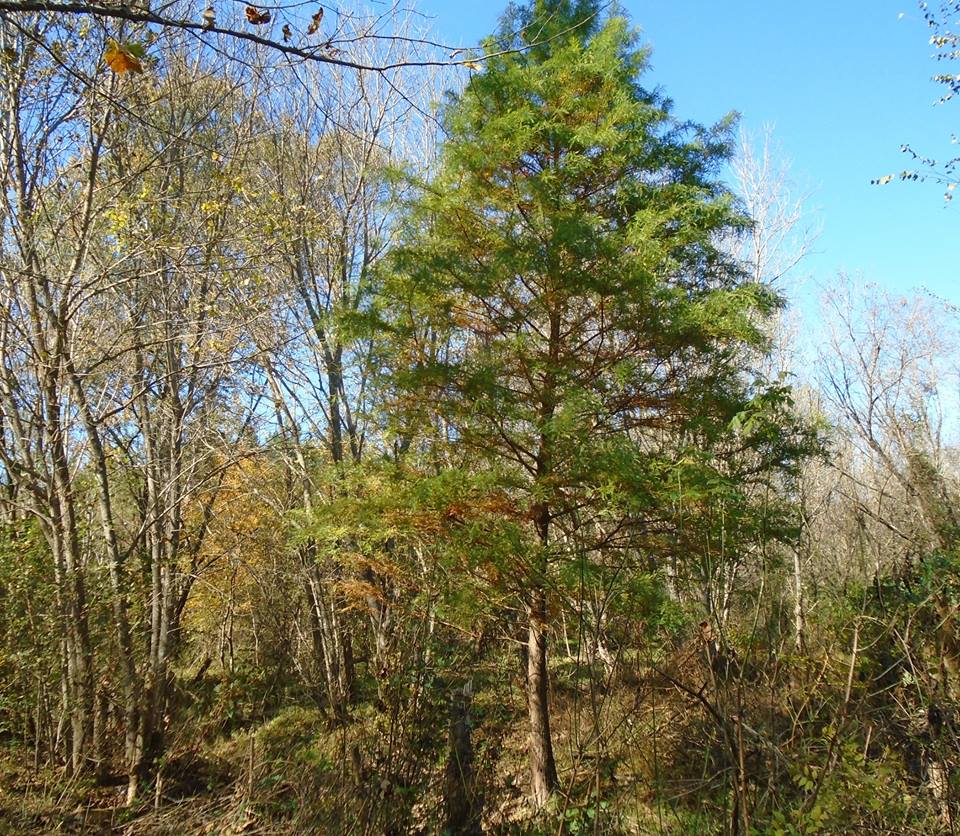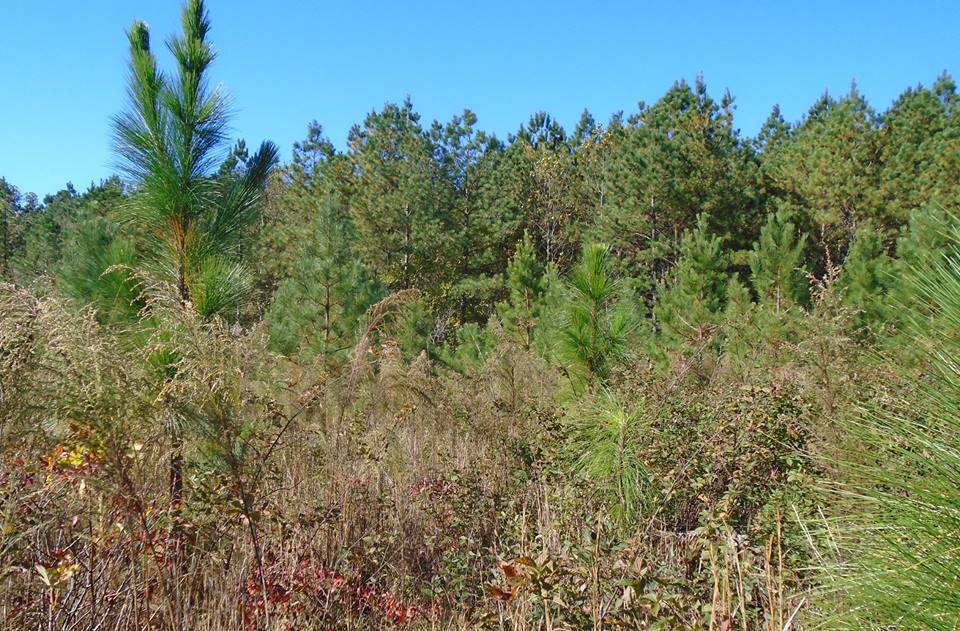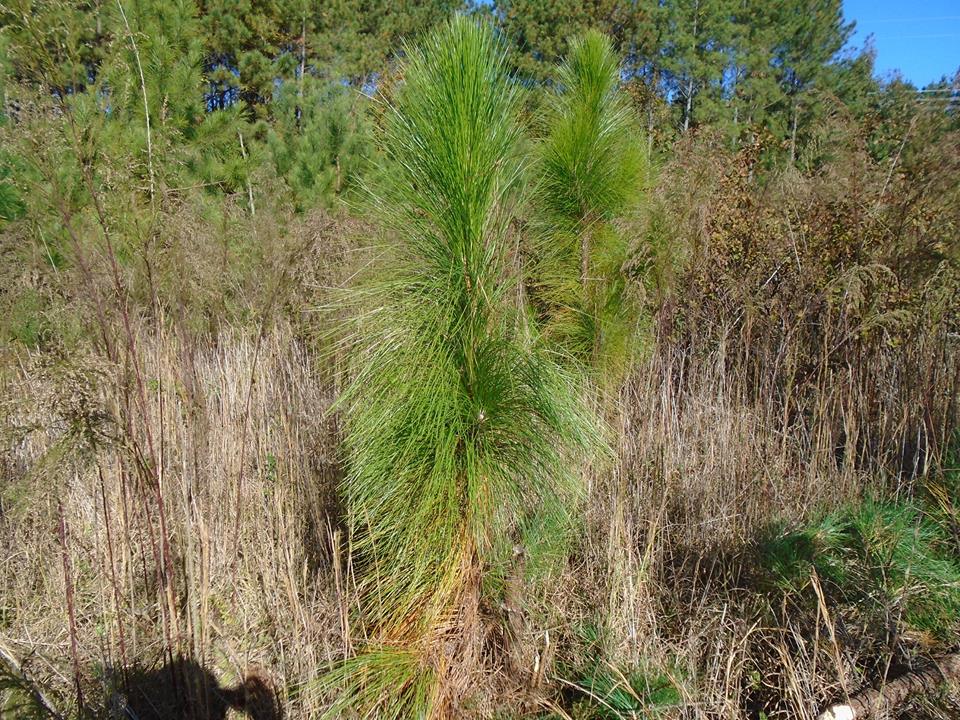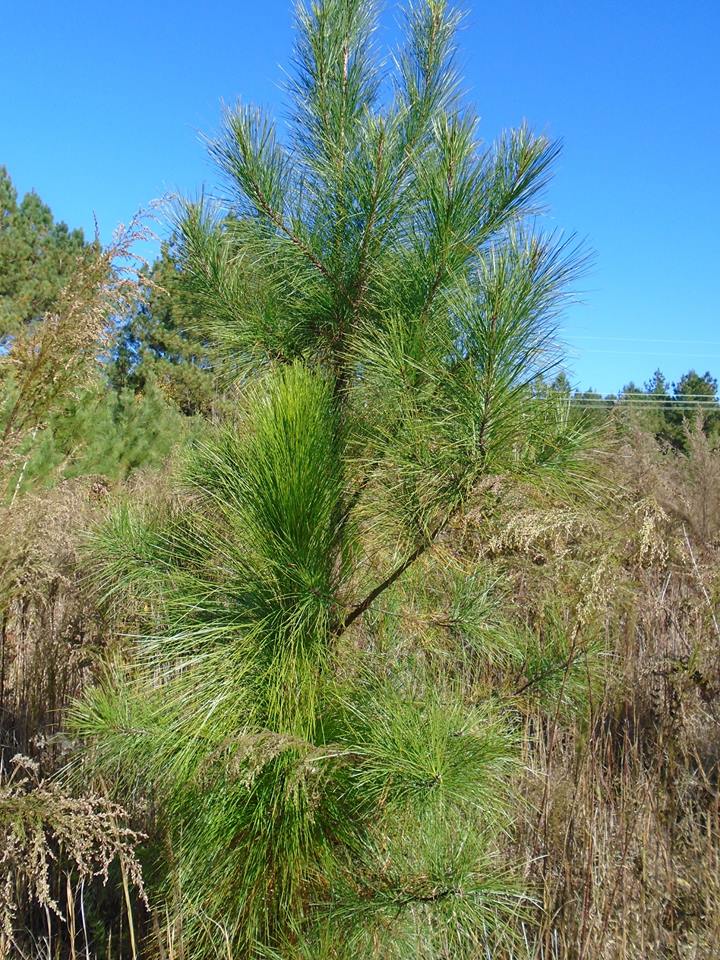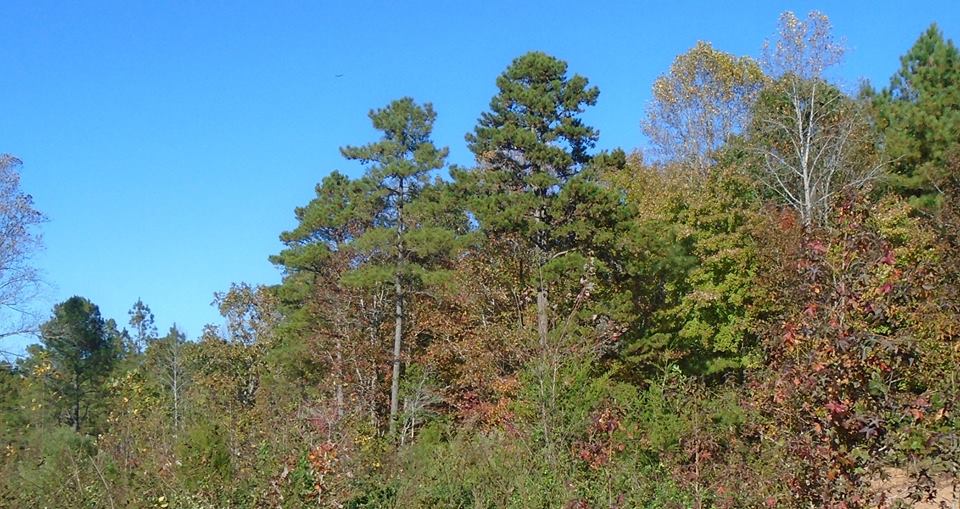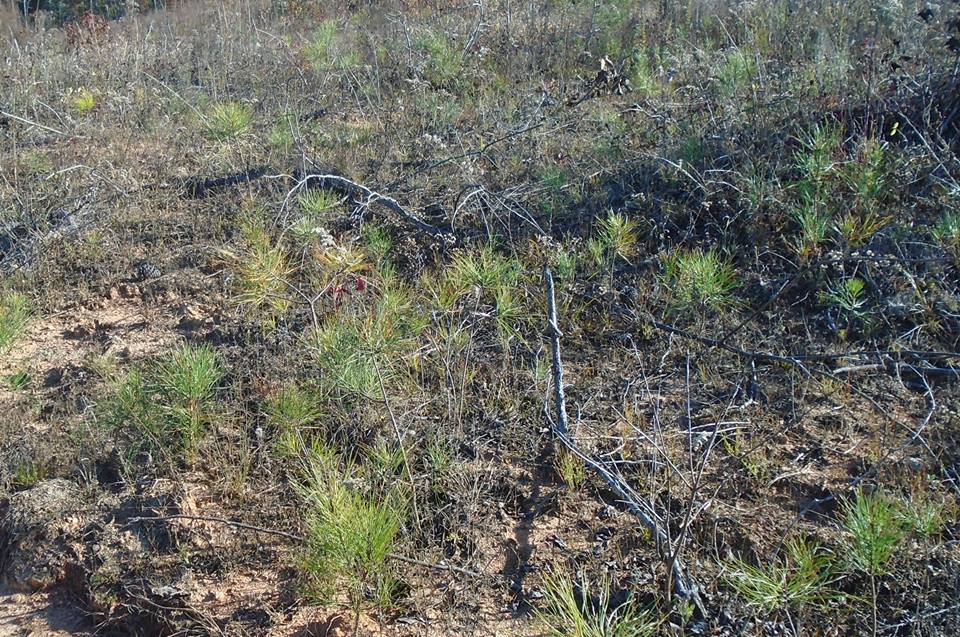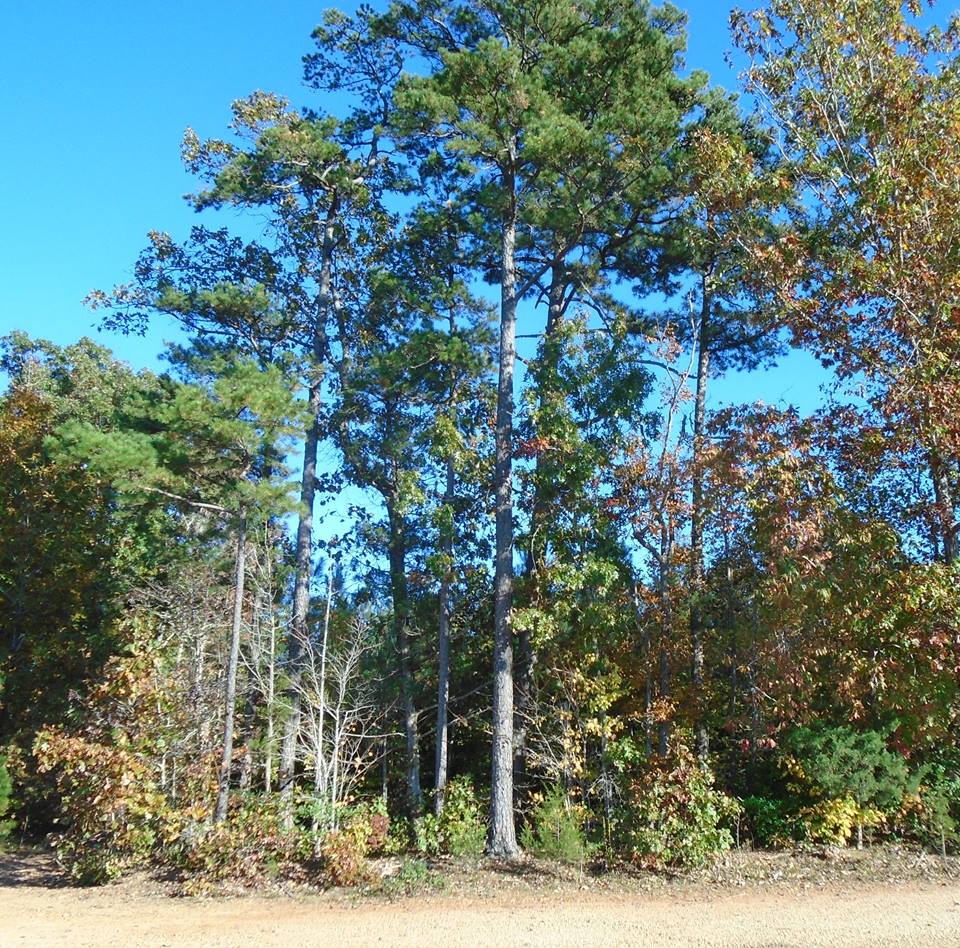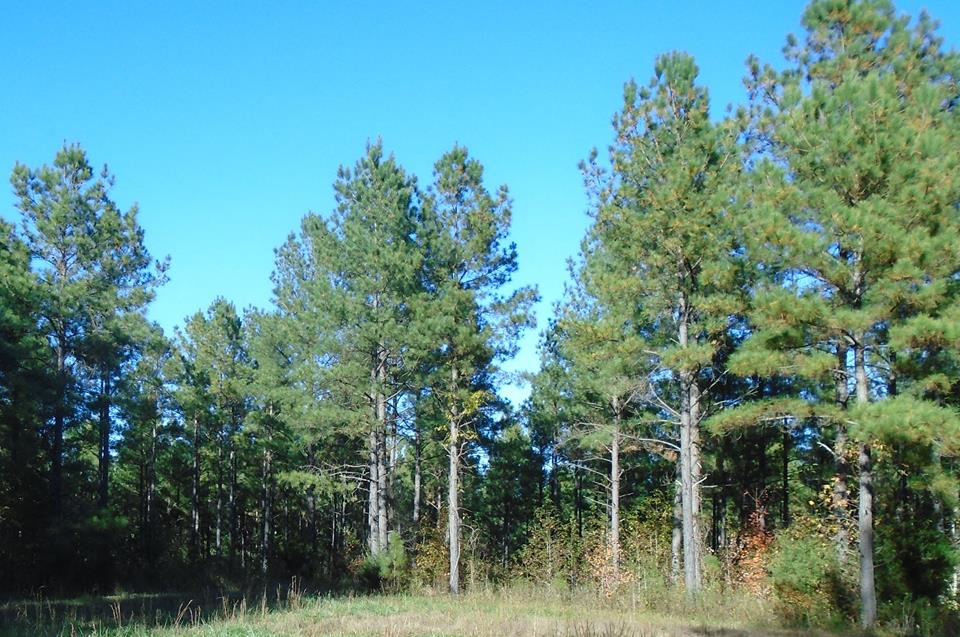Went down to the farms on the way back from Georgia. I spend a few morning hours hacking down anything in the longleaf patch that was not longleaf. I was reminded of the Aldo Leopold essay, “With Axe in hand,” where he wrote about the need to take responsibility for what is on your land. A conservationist is the one who thinks about what he is doing.
I do not use an axe, as a matter of fact. I have a kind of machete called “woodman’s friend,” but it does the same work. I have to cut down the loblolly and the hardwoods to let the longleaf become established and it is a value choice. My photos show a particular instance. It looks like a single tree at first, but a close looks shows a loblolly growing inches from a longleaf. Generally, I love the loblolly, but in this case I had to cut it down. You can see the choice int the first and second photo.
My third photo shows the official dividing line at the end of the longleaf natural range. As I wrote in previous note, since nobody has done it yet, I am declaring that my property is the edge. You can see it clearly in the last two photos. One one side is clearly longleaf and the other side not, so it must be true.
My last photo is a bald cypress I planted ten years ago. This tree is well outside its natural range, maybe the edge of the new range.
Inspected the place we clear cut last year. It is now fall, so I can see what is coming under. We planted 21,000 seedlings in March and April, almost 500 per acre. It looks like there will be a lot more. The lobolly have seeded in. The reason we planted, as opposed to natural regeneration, is that I think that the new seedlings will be genetically faster and better. I guess this will be a good test case. Presumably, I will be able to tell in five years.
My first photo shows the lobolly that have grown in the last few months. Next shows how much they have filled in in the landing zone. Picture #3 is some of the older loblolly, maybe the seed sources. The last two photos are shortleaf pine. These are also beautiful trees. They grow slower than lobolly and in many ways behave more like a hardwood species. They are the most widespread of all southern pine species, but are always associated and never dominant.

